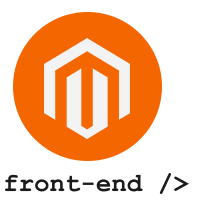❗ Note
Start the console from the administrator
- Install node.js to any location on your machine.
- Install Grunt CLI tool globally and locally. To do this, run the following command in a command prompt:
npm install -g grunt-cli,npm install grunt --save-dev - Install (or refresh) the
node.jsproject dependency, including Grunt, for your Magento instance. To do this, run the following commands in a command prompt:
cd <your_Magento_instance_directory>
npm install
npm update- Add your theme to Grunt configuration. To do this, in the
dev/tools/grunt/configs/themes.jsfile, add your theme to module.exports like following:
module.exports = {
...
<theme>: {
area: 'frontend',
name: '<Vendor>/<theme>',
locale: '<language>',
files: [
'css/styles-m',
'css/styles-l'
],
dsl: 'less'
...
},- (Optional) If you want to use Grunt for "watching" changes automatically, without reloading pages in a browser each time, install the LiveReload extension in your browser.
grunt clean:<theme>– Removes the theme related static files in thepub/staticandvardirectories.grunt exec:<theme>– Republishes symlinks to the source files to thepub/static/frontend/<Vendor>/<theme>/<locale>directory.grunt less:<theme>– Compiles.cssfiles using the symlinks published in thepub/static/frontend/<Vendor>/<theme>/<locale>directorygrunt watch– Tracks the changes in the source files, recompiles.cssfiles
Сomparison table Gulp vs Grunt
| Gulp | Grunt | |
|---|---|---|
| Compilation of all themes (10 files): | 16sec | 33sec |
| Custom theme compilation (2 files) | 4.5s | 11.2s |
- Download as a zip file or clone this.
- Copy
gulpfile.jsandpackage.jsonin to the root directory - Install gulp globaly and locally using
npm install -g gulp-cli,npm install gulp --save-dev - Install modules: run a command in a root directory of your project
npm install. - Compilation:
gulp less --<theme> --live (with live reload) - Watcher:
gulp watch --<theme> --live (with live reload) - For using liveReload install extension for your browser
❗ Note
Don't remove grunt modules (You must use
grunt exec:<theme>command for republishes symlinks to the source files)
